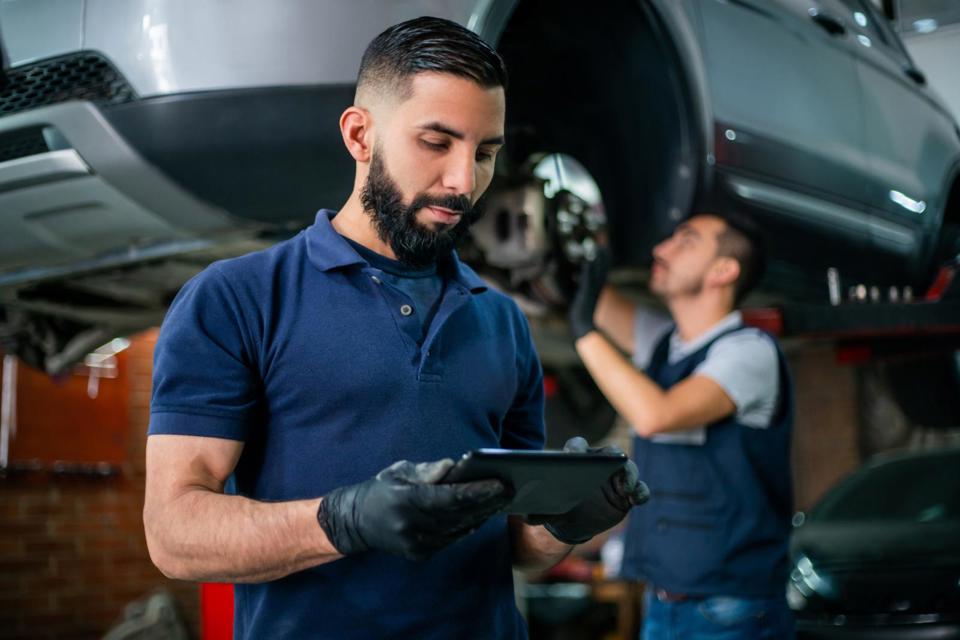Downtime, due to vehicles awaiting repair, is a growing problem for fleets, according to 2025’s Arval Mobility Observatory Fleet and Mobility Barometer.
The percentage of fleets saying that having vehicles unavailable awaiting repair is a problem has grown by a third, from 18% to 24%, the new figures show.
John Peters, head of Arval Mobility Observatory in the UK, said: “While having vehicles off-road has always been a problem for car and van operators, it has undoubtedly become more prevalent since the pandemic thanks to issues such as a shortage in workshop capacity, a need for more trained technicians, and challenging parts availability.
“All of these are having an ongoing impact on vehicle operations and many fleets apparently think things are getting worse.”
Arval Mobility Observatory Barometer shows respondents are adopting a range of measures to tackle the issue.
The number one response, cited by almost half (47%) of fleets, is to at least in part base vehicle acquisition on manufacturers who are able to provide better supply of parts.
Peters explained: “This is probably a reflection of practical experience, we believe, with fleet managers avoiding car and van makers who have proven unable to provide fast access to parts, something that has a direct impact on vehicle availability.”
Also, four out of 10 fleets (44%) say they are devoting time to managing the service and repair process more closely, but the biggest growth area compared to last year is an increased use of daily rental, mentioned by 41% of fleets compared to 34% in 2024.
“This is undoubtedly an effective way of resolving low vehicle availability but arguably an expensive option at a time when fleet budgets are under pressure,” continued Peters. “It could be that for many fleets, it is the only solution available.”
The biggest fall since last year in the Barometer is the percentage of vehicle operators who are keeping vehicles on the road until a repair is possible. At 30%, this shows a fall of 10 percentage points.
Peters believes that the general ageing of fleets in recent years means driving cars and vans while an issue exists is becoming less and less of a viable option.
“Older vehicles are simply more likely to create serious safety concerns,” he said.
There has also been little change in both businesses choosing to create or maintain a pool fleet in response to downtime (28%) or introducing better service and repair suppliers (28%).
Peters concluded: “Reading these statistics, we see that downtime remains such a prominent issue in the fleet sector.
“Ensuring vehicles are available is in many ways a very high concern for drivers.
“Five years after the pandemic, the fact our research suggests this remains a growing difficulty shows how those running fleets still face mounting problems in this area.”
Data released by Epyx last year, showed that average fleet vehicle off-road (VOR) times in the UK had increased dramatically since the pandemic.
Northern Ireland had the longest average downtime at 2.40 days, while the shortest VOR wait was in the north west, with 1.82 days between when a car or van enters a workshop and is finally repaired.
The statistics were compiled from Epyx’s 1link Service Network platform, used by vehicle operators totalling more than four million units to manage and process sercvice, maintenance and repair (SMR).
It showed that VOR times have increased in almost all regions since the onset of the pandemic. For example, VOR in Scotland had risen from 1.96 days in 2020 to 2.04 in 2021, 2.16 in 2022 and 2.39 in 2023.
Read more from Fleet News on how to optimise fleet service, maintenance and repair.





















Login to comment
Comments
No comments have been made yet.